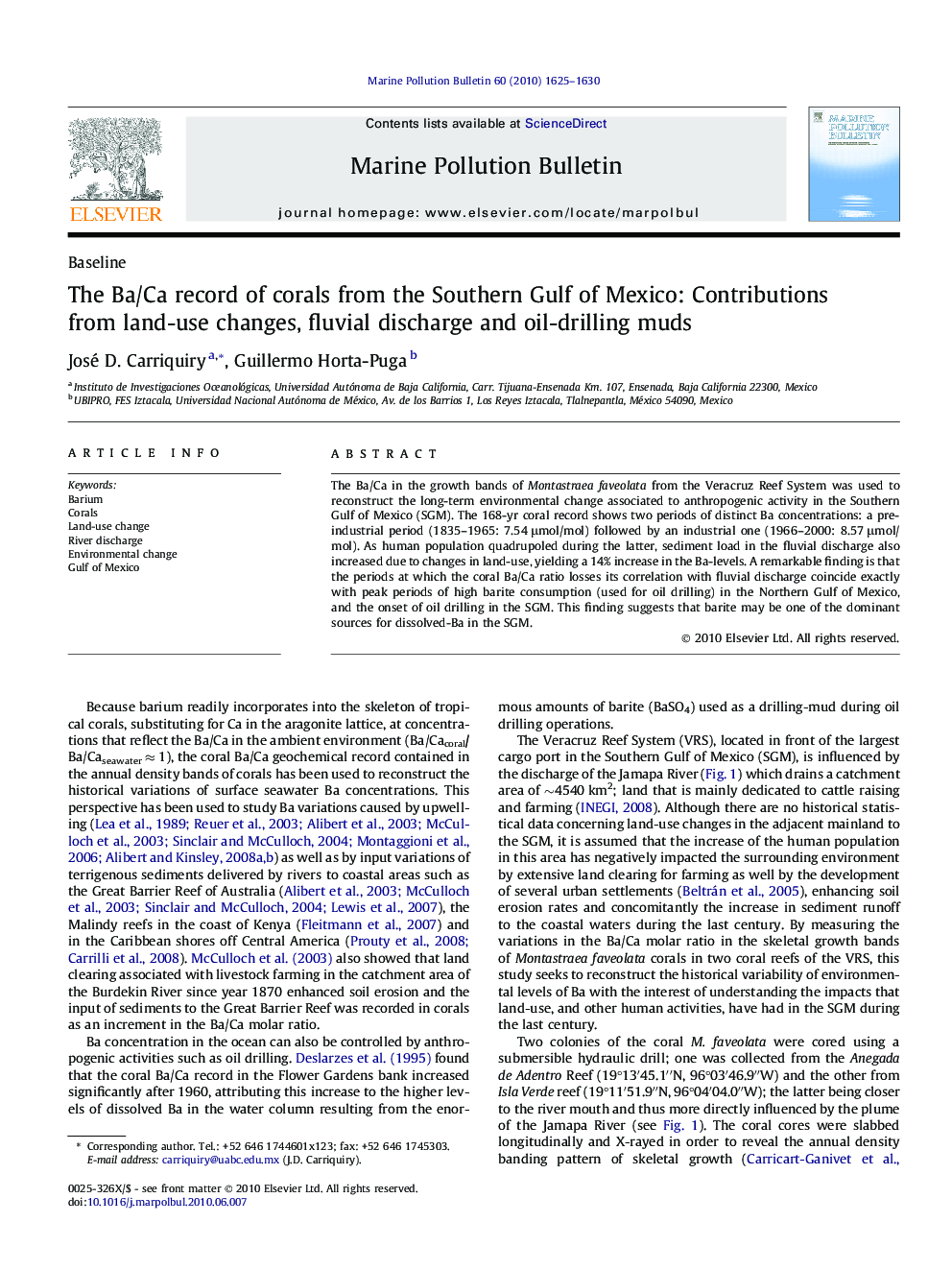| Article ID | Journal | Published Year | Pages | File Type |
|---|---|---|---|---|
| 6362372 | Marine Pollution Bulletin | 2010 | 6 Pages |
Abstract
The Ba/Ca in the growth bands of Montastraea faveolata from the Veracruz Reef System was used to reconstruct the long-term environmental change associated to anthropogenic activity in the Southern Gulf of Mexico (SGM). The 168-yr coral record shows two periods of distinct Ba concentrations: a pre-industrial period (1835-1965: 7.54 μmol/mol) followed by an industrial one (1966-2000: 8.57 μmol/mol). As human population quadrupoled during the latter, sediment load in the fluvial discharge also increased due to changes in land-use, yielding a 14% increase in the Ba-levels. A remarkable finding is that the periods at which the coral Ba/Ca ratio losses its correlation with fluvial discharge coincide exactly with peak periods of high barite consumption (used for oil drilling) in the Northern Gulf of Mexico, and the onset of oil drilling in the SGM. This finding suggests that barite may be one of the dominant sources for dissolved-Ba in the SGM.
Related Topics
Physical Sciences and Engineering
Earth and Planetary Sciences
Oceanography
Authors
José D. Carriquiry, Guillermo Horta-Puga,
